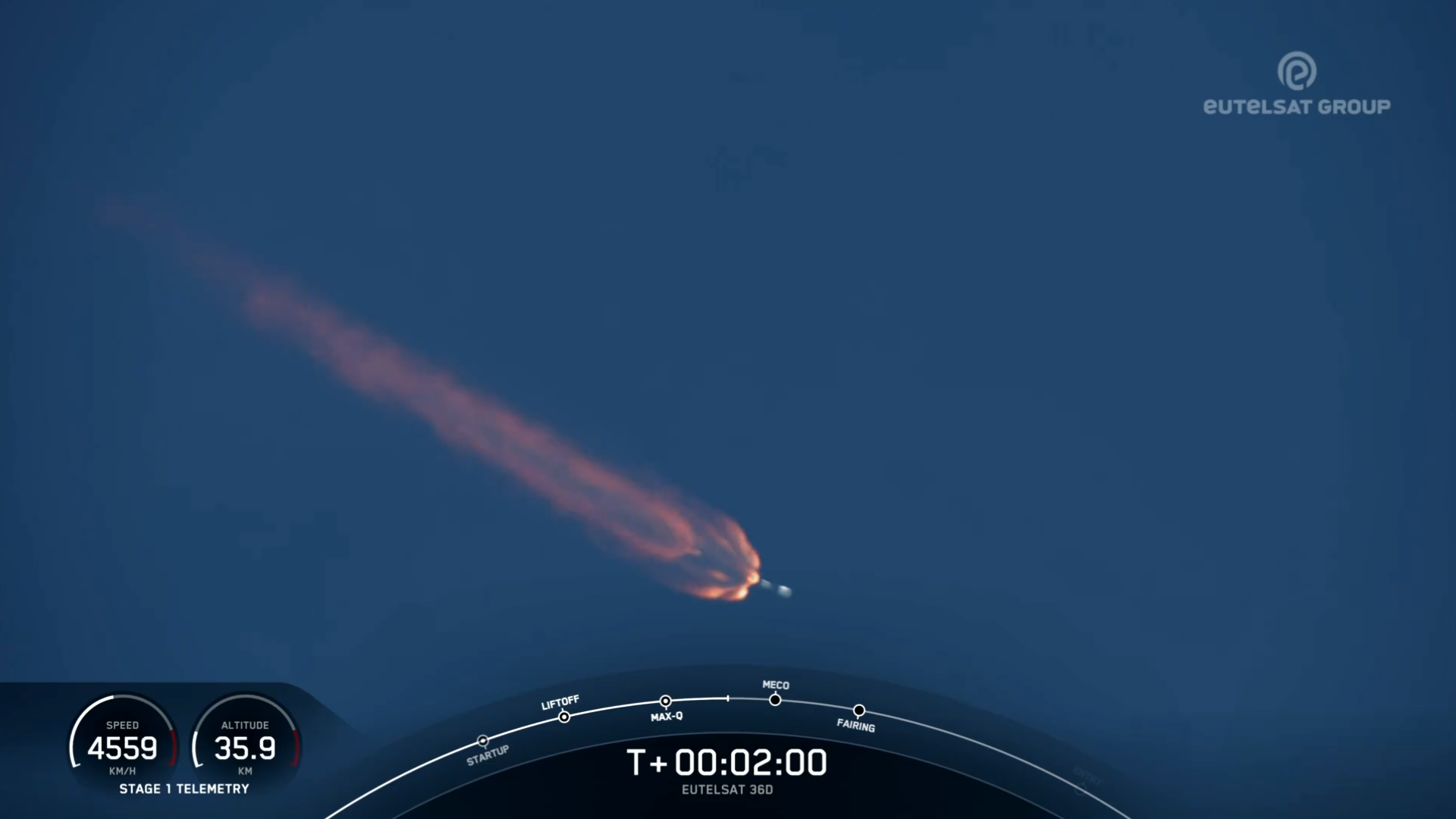
In three strokes, and across a span of only a few hours, SpaceX hopes to wrap up a dramatic March as its first-ever calendar month to see 11, 12 and 13 Falcon 9 launches, as well as potentially setting new records for the shortest-yet intervals between pairs of missions and a trio of missions. Three veteran boosters with 42 prior flights between them stood primed on Saturday to rise from historic Pad 39A at Florida’s Kennedy Space Center (KSC), then from neighboring Space Launch Complex (SLC)-40 at Cape Canaveral Space Force Station and finally from Space Launch Complex (SLC)-4E at mountain-ringed Vandenberg Space Force Base, Calif., during a rapid-fire campaign of missions which began at 5:52 p.m. EDT.
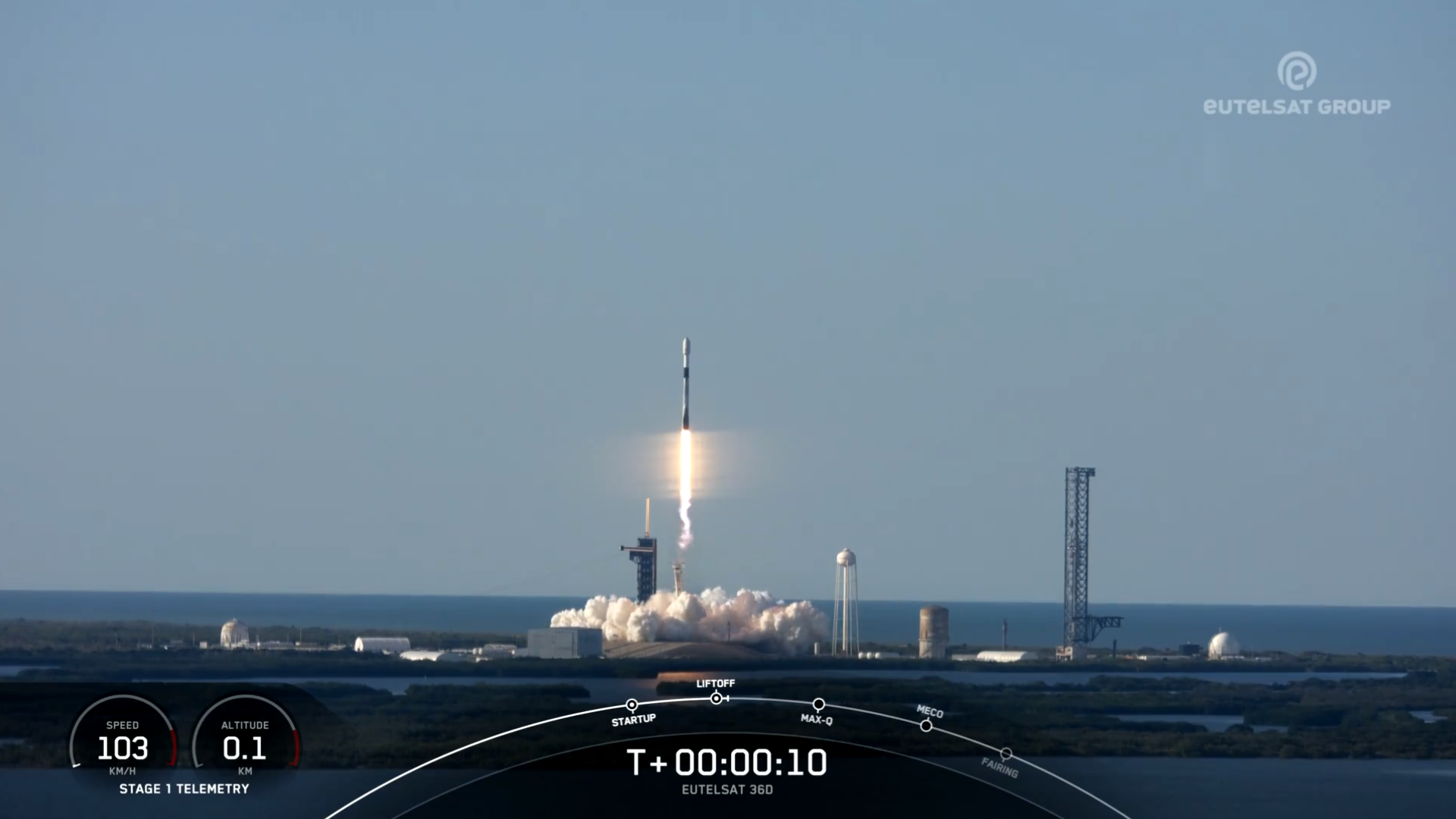
The unusual circumstance came about in part following the delay of a Starlink-laden flight by the B1071 booster out of Vandenberg. Previously slated to launch during a four-hour “window” between 7:30 p.m. PDT and 11:24 p.m. PDT Thursday, teams elected to stand down and initially aligned for a backup attempt on Friday before SpaceX’s surprise announcement late last night that it would fall into third place behind a pair of East Coast missions set to fly as little as four hours and 38 minutes apart on Saturday.
First out of the gate from KSC’s Pad 39A was B1076, a booster with 11 previous flights to her credit. She entered service in November 2022, when she lofted the CRS-26 Cargo Dragon for a six-week berth at the International Space Station (ISS).
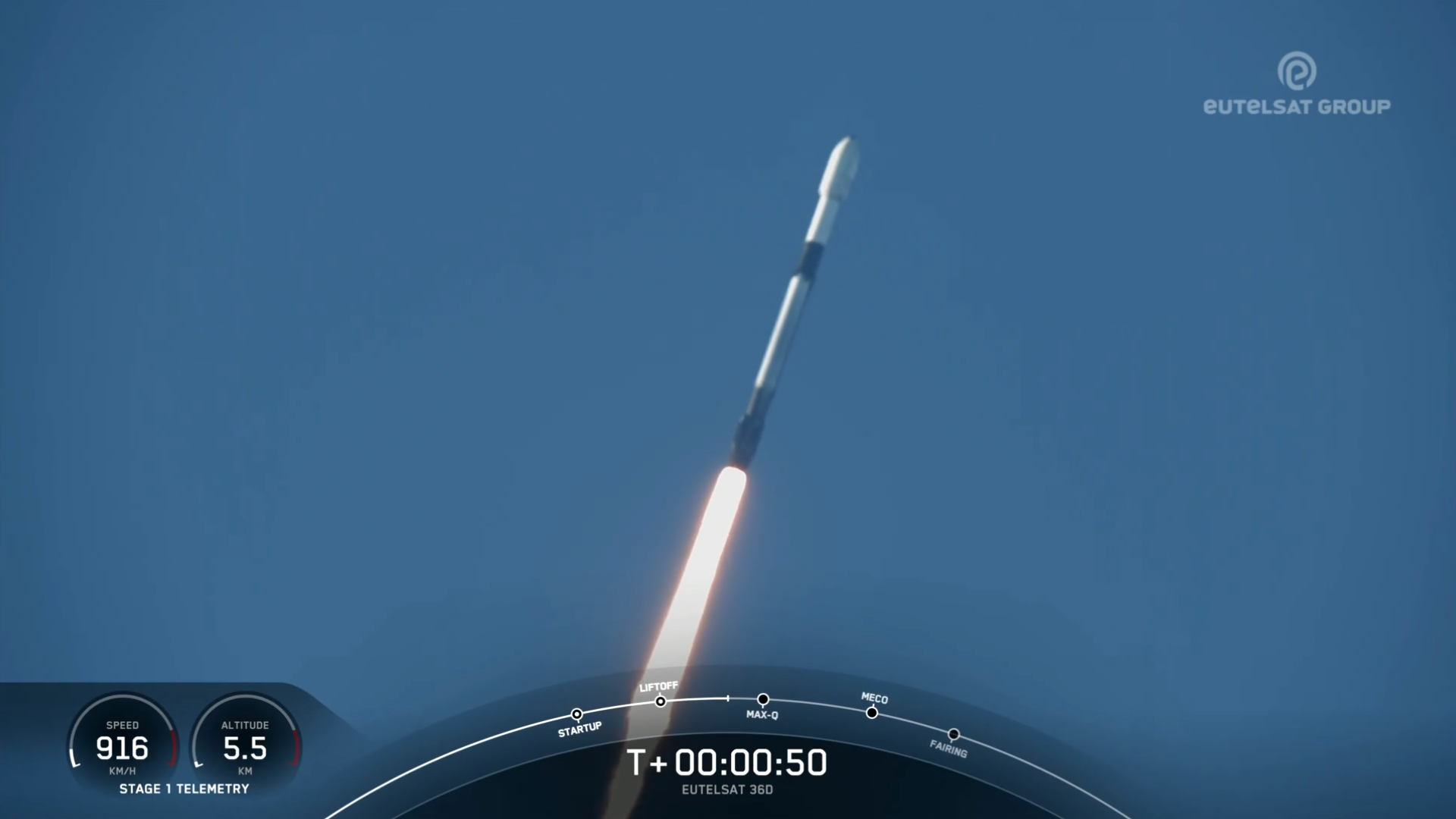
B1076 went on to log eight additional launches last year, heaving 40 broadband satellites uphill for London, England’s OneWeb in the second week of January 2023, then the heavyweight Intelsat 40e geostationary communications satellite—co-manifested with NASA’s Tropospheric Emissions: Monitoring of Pollution (TEMPO) payload—in early April, five batches of Starlinks in February, May, July, September and October and a pair of O3b mPOWER communications satellites in November. Her 2024 campaign began with January’s launch of the Swedish Ovzon-3 geostationary broadband satellite and SpaceX’s first-ever “Leap Day” mission on 29 February
Primary payload for B1076’s 12th voyage to the edge of space was Eutelsat 30D, a French geostationary communications satellite owned by the Eutelsat Consortium. As its name implies, this 11,000-pound (5,000-kilogram) satellite, built by Airbus Defence & Space, will sit at 36 degrees East longitude and its powerful payload of 70 Ku-band transponders provides Direct-to-Home (DTH) television broadcasting and government services across Africa, Russia and Europe.
Airbus was selected by Paris, France-headquartered Eutelsat in March 2021 to build Eutelsat 36D, which it describes as “a new generation, multi-mission geostationary telecommunications satellite”. Based upon the Eurostar Neo “bus”, the satellite will remain operational in geostationary orbit for at least 15 years and “combines increased payload capacity and more efficient power and thermal control systems with reduced production time and optimized costs, as part of a fully digitalized production process”.
Notably, early in its development Airbus emplaced a dedicated Ultra-High-Frequency (UHF) “hosted” payload for military communications aboard Eutelsat 36D “to offer a new UHF communications service to the armed forces, particularly those of European countries and NATO allies”. To be operated from Airbus’ Network Operations Centre in Toulouse, France, its 18 UHF channels will enable up to 200 simultaneous communications across Europe, the Middle East, Africa, large parts of Asia and regions of the Atlantic Ocean to eastern Brazil and the Indian Ocean to western Australia.
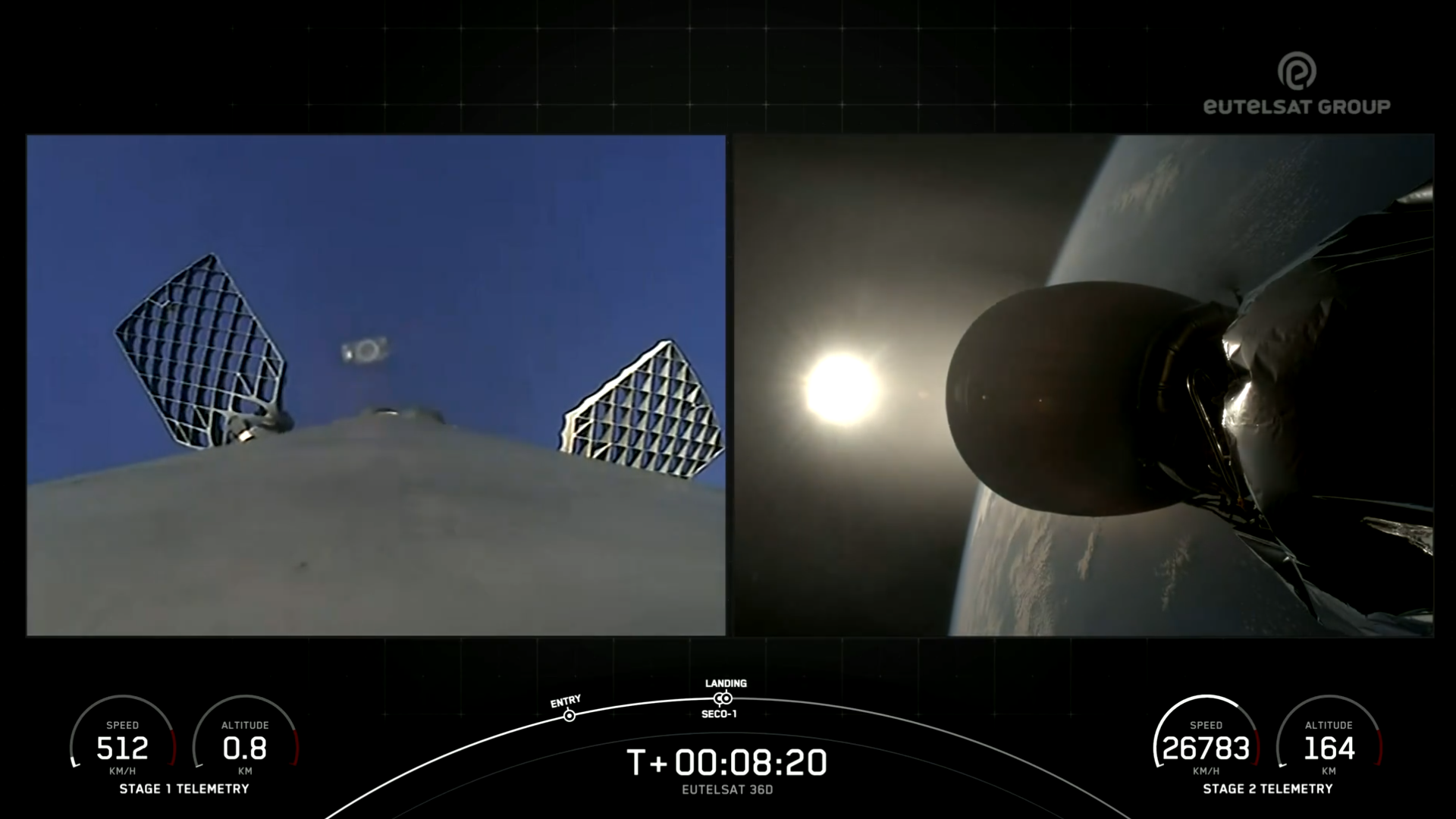
More recently, in September of 2022 Airbus signed contracts with the Ministries of Defence of both the Czech Republic and the Netherlands to facilitate satellite communications for a 15-year period. The two countries’ armed forces will utilize two and three channels, respectively, of Eutelsat 36D’s military hosted payload.
On 11 March, the satellite was airlifted by an Airbus BelugaST from Toulouse to Sanford, Florida, then transported to KSC for pre-launch processing. Eutelsat 36D is the sixth Eutelsat-financed payload to be lifted by a Falcon 9, following on the heels of the March 2015 and June 2016 launches of Eutelsat 115 West B and Eutelsat 117 West B and a trio of missions in the late fall of 2022 which delivered the Hotbird 13G, Hotbird 13G and Eutelsat 10B satellites—the latter of which required the 11-times-flown B1049 booster to be expended—to orbit.
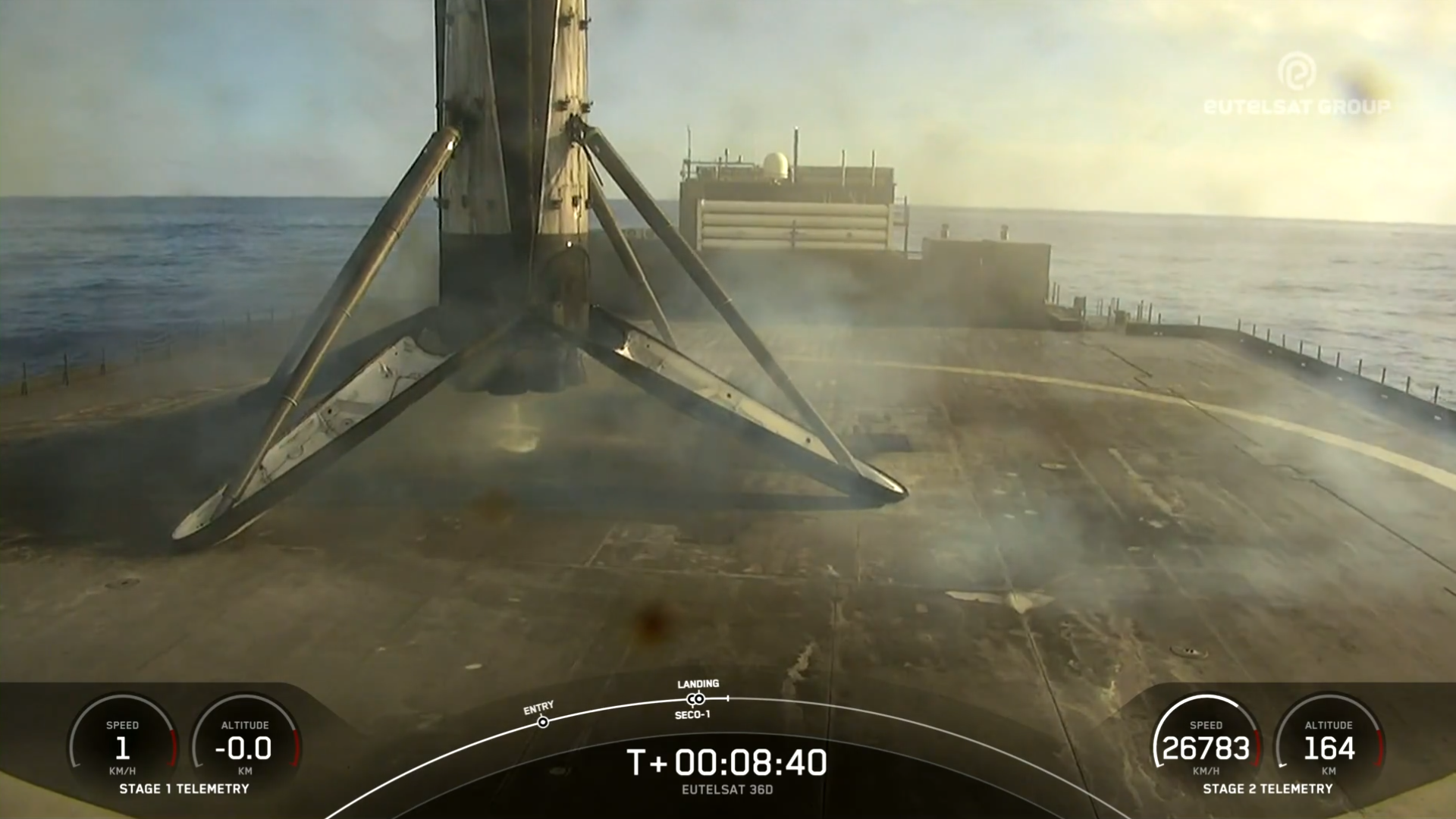
In readiness for the Eutelsat 36D launch, the Autonomous Spaceport Drone Ship (ASDS), “Just Read the Instructions”, put to sea out of Port Canaveral on Wednesday, bound for a recovery position about 390 miles (630 kilometers) offshore in the Atlantic Ocean. Early Saturday, SpaceX announced that all three boosters for the weekend’s triple-header of missions had all been transported out to their respective launch pads and elevated to the vertical, ready for a trio of liftoffs in as little as four hours and 38 minutes.
B1076 benefitted from an expansive launch window of almost four hours, running from 5:52 p.m. EDT through 9:50 p.m. EDT. And Florida’s often intractable weather was close to perfect, pledging a 95-percent Probability of Go (PGo) for both Saturday’s primary attempt and a backup opportunity on Sunday evening.
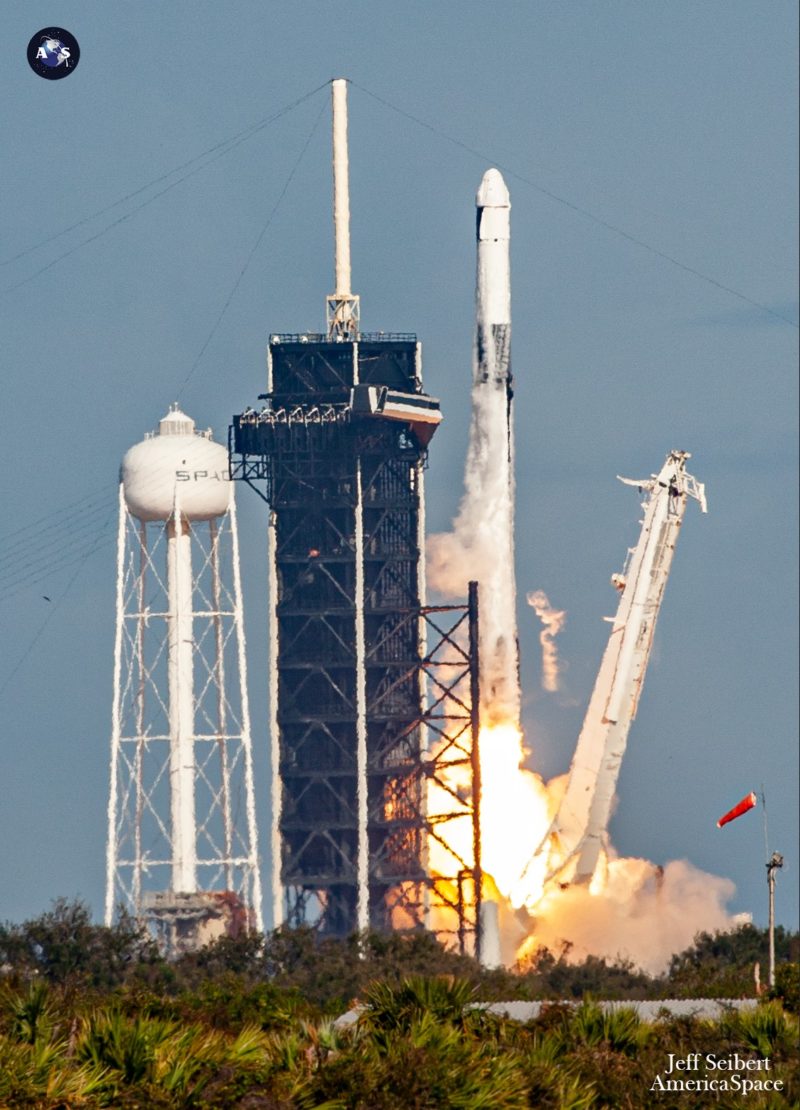
“Weather conditions will be very favorable for Saturday evening’s launch attempt,” noted the 45th Weather Squadron at Patrick Space Force Base in an update. “Cool and dry air will continue to filter in today as a strong area of high pressure slides in from the west.” All told, there were “no significant weather concerns” and a negligible risk of violating the Thick Cloud Layers Rule.
Without further ado, and backdropped by gorgeous Space Coast skies, B1076 took flight precisely on the opening of Saturday’s launch window at 5:52 p.m. EDT, kicking off SpaceX’s 30th Falcon 9 mission in the 13th week of the year. Eight minutes later, she returned to a perfect touchdown on JRTI’s deck and at 34 minutes into the flight Eutelsat 36D was successfully deployed from the second stage, marking the 58th commercial geostationary communications satellite lofted by a Falcon 9 or Falcon Heavy since December 2013.
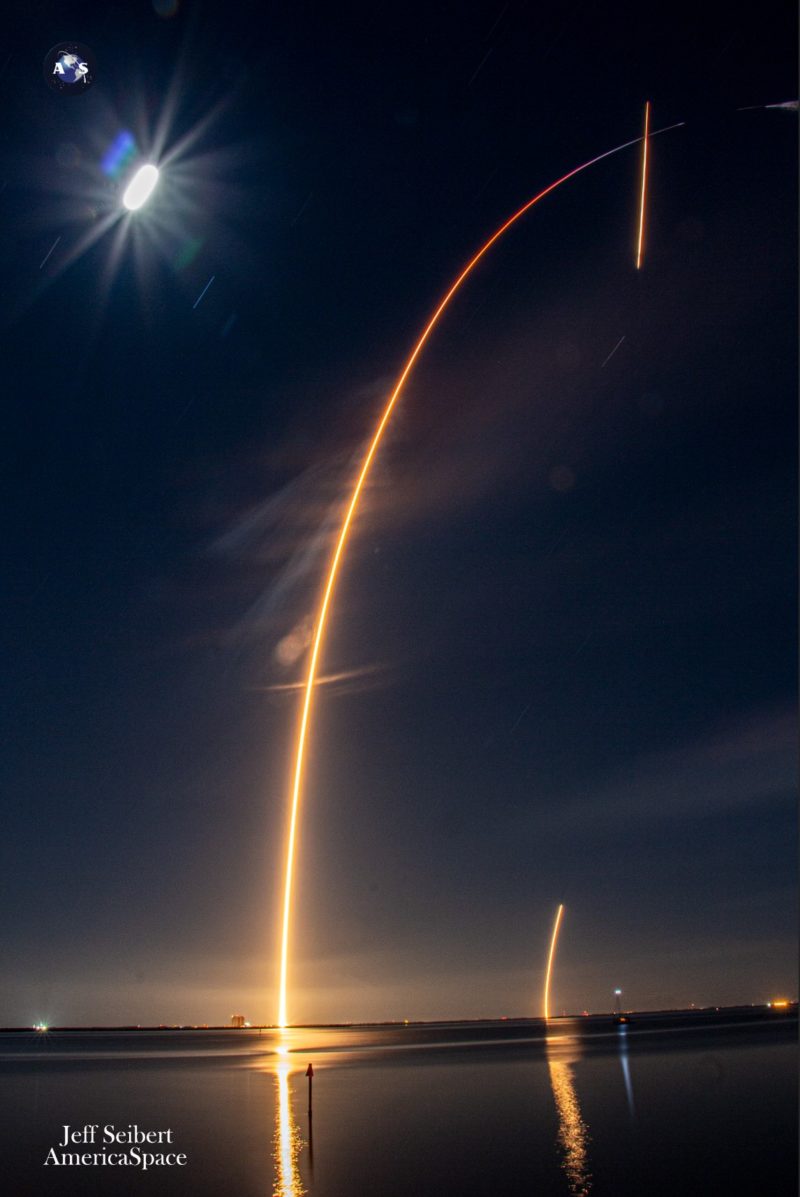
Thirty missions flown by 16 boosters within 2024’s first 13 weeks is an impressive achievement, equating to an average of a flight every 2.9 days. By contrast, even in 2023’s record-setting 96-launch year it took SpaceX until the middle of May to reach 30 flights. Two years ago, 30 flights were not reached until mid-July of 2022 and only as recently as 2021 were more than 30 missions attained across an entire calendar year.
Ten launches out of Vandenberg and the rest from storied Space Launch Complex (SLC)-40 at Cape Canaveral Space Force Station or historic Pad 39A at the Kennedy Space Center (KSC) have lofted almost 450 Starlinks, crewed and uncrewed missions to the International Space Station (ISS), geostationary communications satellites for Sweden, Indonesia and now France’s Eutelsat, spacecraft to explore Earth’s oceans and climate and the Moon’s potential habitability, a highly classified payload for the U.S. Space Force and the multi-customer Transporter-10 rideshare “stack”. Those missions concluded with 21 drone ship landings and nine pinpoint touchdowns on solid ground.
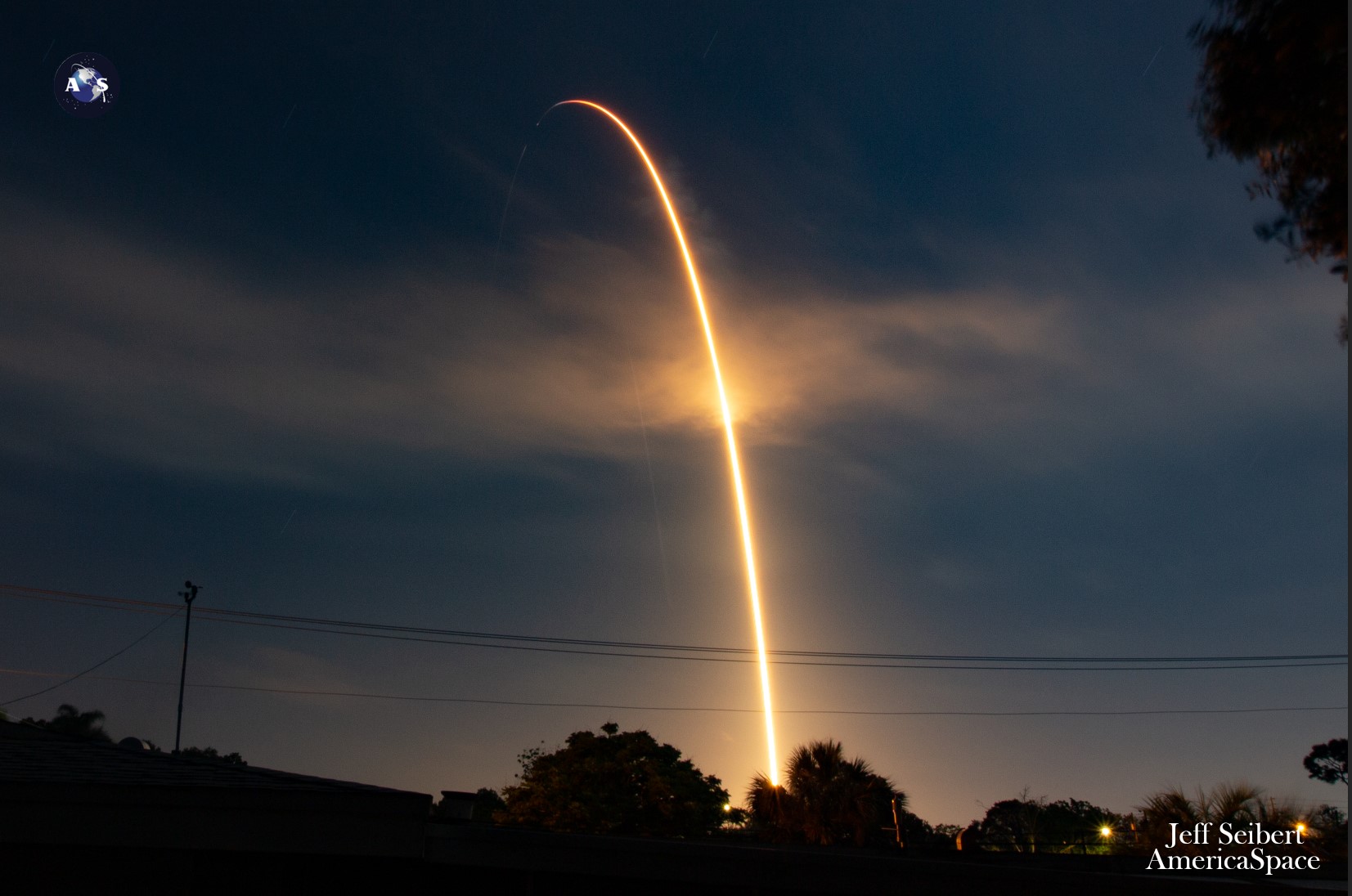
In January, SpaceX attained ten launches including four flights out of Vandenberg for the first time in a single calendar month. Just last month, the Hawthorne, Calif.-headquartered organization recorded its first-ever “Leap Day” mission on 29 February and earlier in March flew a pair of Falcon 9 boosters under two hours apart for the first time and set a new record of only 20 hours between three launches.
Two crew-carrying missions to the ISS included the station’s oldest long-duration crew member and citizens of the United States, Russia, Italy, Sweden and the first national space traveler from Türkiye. The venerable Falcon 9 earlier this spring reached its 300th launch, became the first rocket to loft cargo ships for both of NASA’s in-service Commercial Resupply Services (CRS) partners—a Northrop Grumman Corp. Cygnus in January and last week’s launch and arrival of a SpaceX Cargo Dragon—and three boosters reached a life-leading 19 flights apiece.
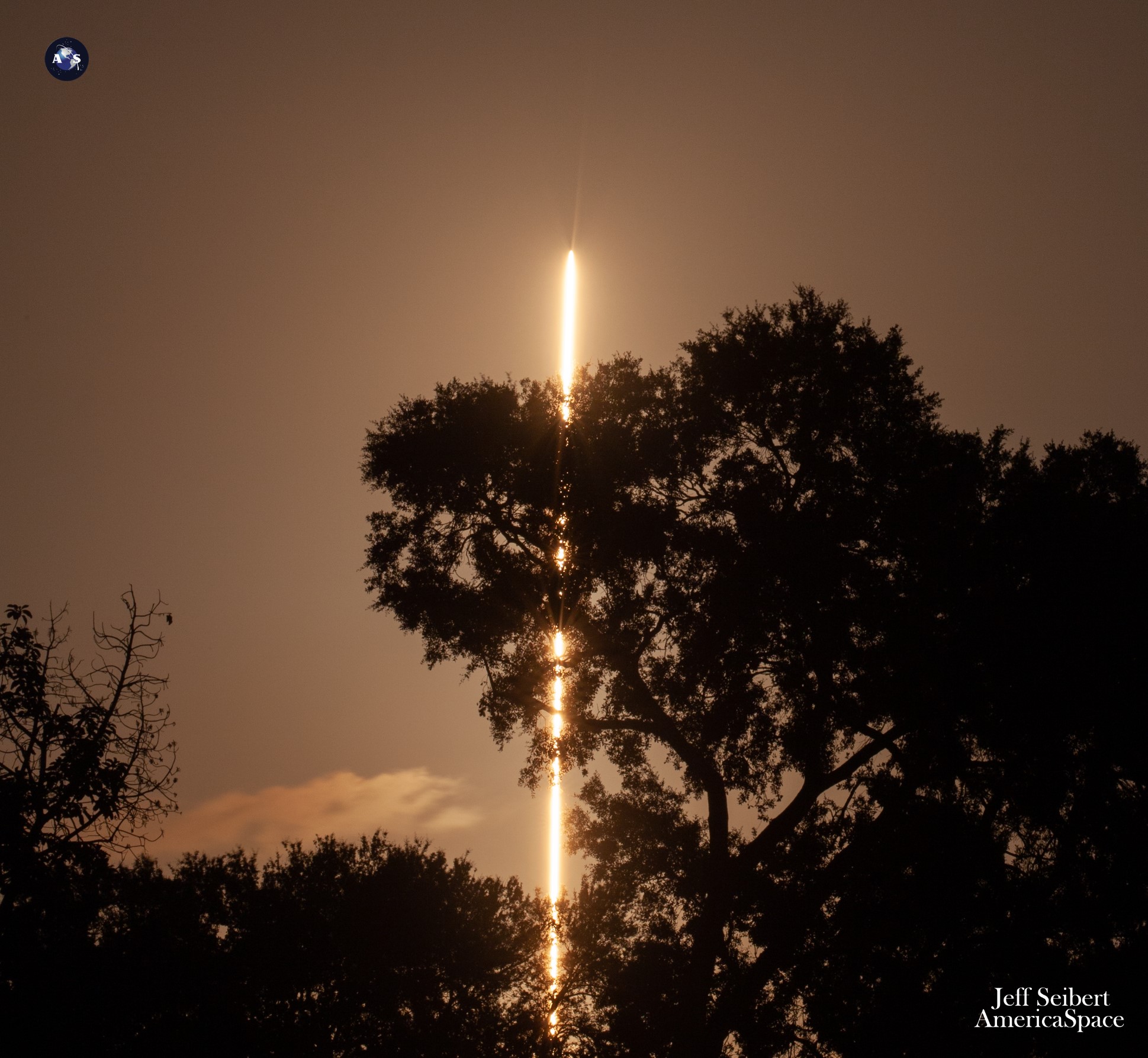
With the success of Eutelsat 36D, SpaceX achieved 11 Falcon 9 launches in a single calendar month for the first time, but the Hawthorne, Calif.-headquartered organization intends to push the envelope further with two more missions before Saturday is out. If attained, that will close out March on 13 flights—an average of one mission every 2.4 days—which is broadly in line with where SpaceX needs to be to achieve its oft-touted goal of up to 144 launches before the year’s end.
Next up, attention turns to the Cape’s SLC-40, where the B1067 booster stands primed for its 18th launch during an almost-hour-long period from 9:02 p.m. EDT through 10 p.m. EDT. And after that, the 14-times-used B1071 core is tracking a four-hour window from 7:30 p.m. PDT through 11:30 p.m. PDT to launch from Vandenberg’s SLC-4E. Between them, the two flights will deliver dozens more Starlink internet communications satellites into low-Earth orbit and both boosters are set for ASDS landings in the Atlantic and Pacific Oceans.
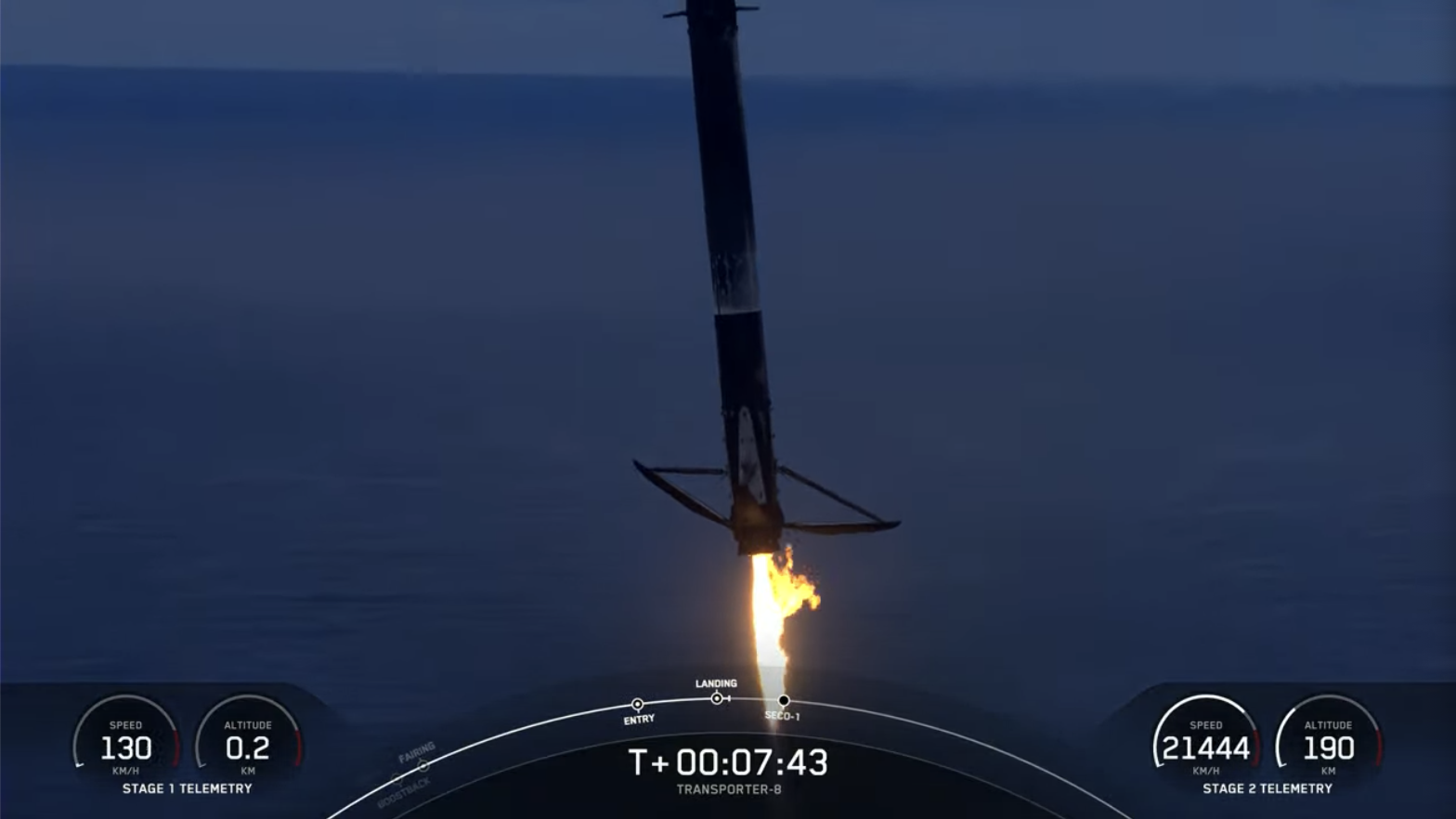
If B1067 and B1071 both fly at the opening of their respective launch windows, only 88 minutes will elapse between them, eclipsing the current record of one hour and 51 minutes set by a pair of Falcon 9 missions earlier this month. And with Eutelsat 36D safely flown, if all three are pulled off precisely on time, another record for the shortest interval between any three Falcon 9 launches will be set at four hours and 38 minutes, neatly surpassing the current 20-hour record set earlier in March.
Saturday night promises to be a dramatic one indeed.





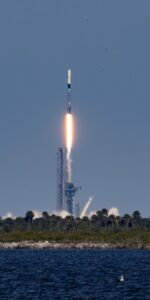
2 Comments
Leave a Reply2 Pings & Trackbacks
Pingback:SpaceX Wraps Up 12-Mission March, Misses Breaking Records - AmericaSpace
Pingback:SpaceX Wraps Up 12-Mission March, Misses Breaking Records - SPACERFIT